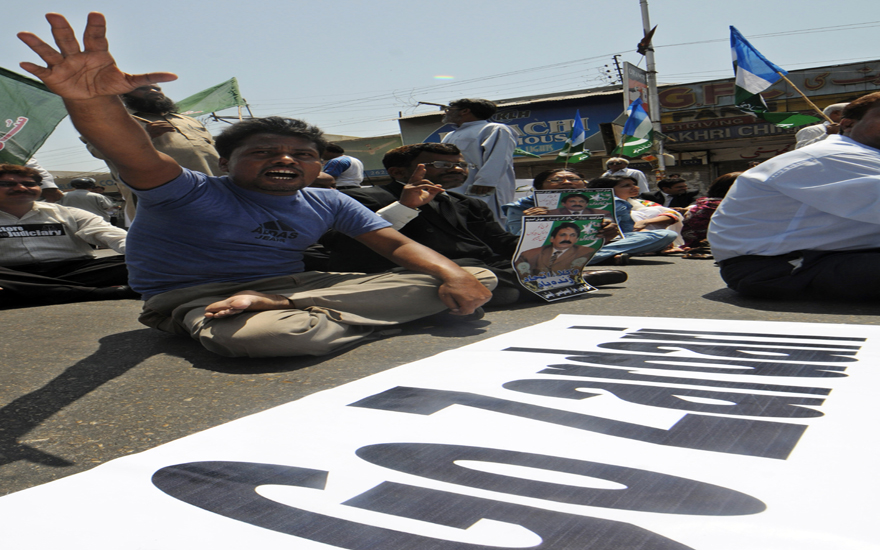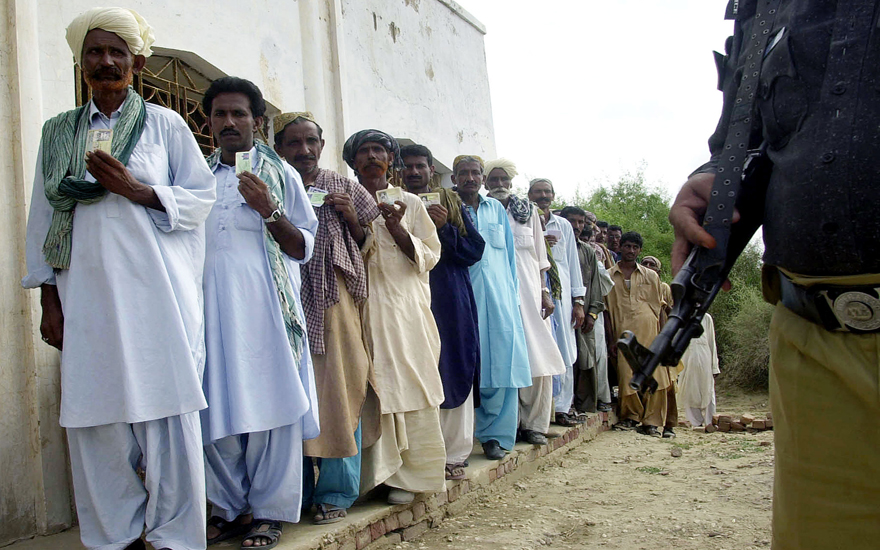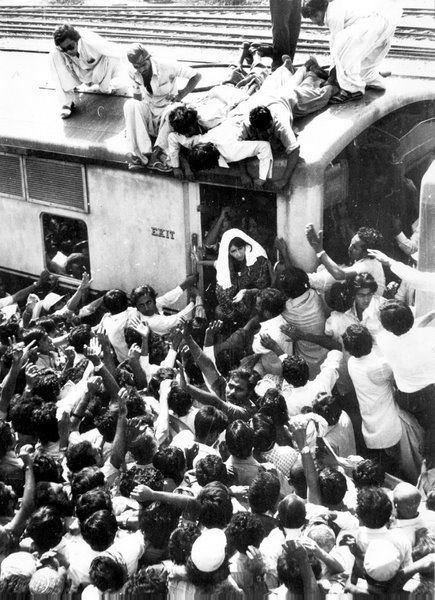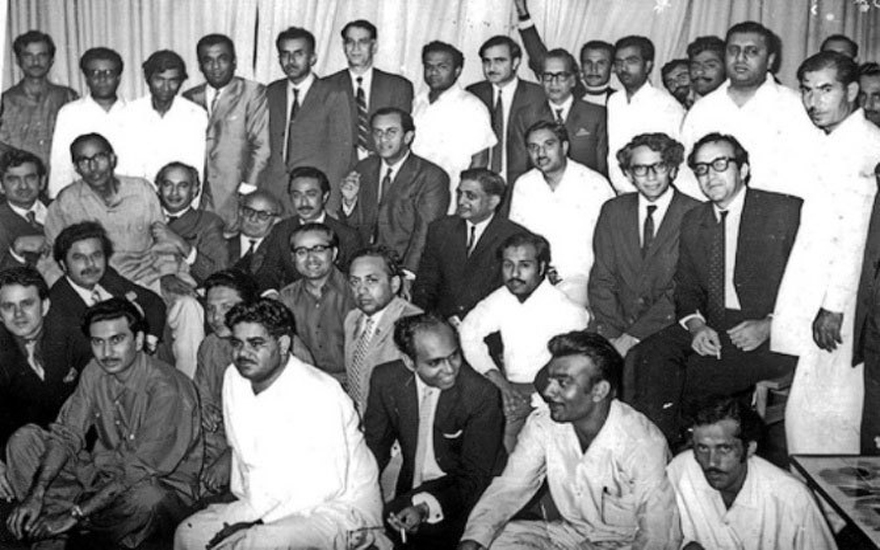The Great Fall
By Babar Ayaz | Newsline Special | Published 10 years ago
Can all of Zardari’s horses and all of Bilawal’s men put the 46-year-old PPP together again? It is still an open question, unlike the nursery rhyme’s sad ending. Die-hard PPP loyalists are optimistic, notwithstanding the great fall of the May 2013 elections, although much of the hope is pinned on the young and inexperienced Bilawal and the dead Bhuttos’ borrowed charisma.
Veteran PPP leader Aitzaz Ahsan says, “Bilawal can still galvanise the PPP jiyalas who could not be mobilised fully in the last elections.” He is hopeful that in the coming months, the party will try to get its act together. The results of the forthcoming local government elections, particularly in the Punjab, will serve as an example of whether the PPP leadership has truly learnt any lessons from the debacle.
A turnaround may not be possible, however, in the absence of a sincere effort to look within. Soon after the elections, the PPP did announce the setting up of a committee headed by Aitzaz Ahsan to determine why it was virtually wiped out everywhere, except Sindh. It was not a serious move, however, as the committee was never constituted, nor were its terms of reference determined. Instead, PPP leaders continued to blame local and international conspiracies and widespread rigging in the Punjab for their horrific defeat. They were wiped out from Punjab, Khyber Pakhtunkhwa and Balochistan. The two seats they managed to win in South Punjab were thanks to Makhdoom Ahmed Mehmood, who crossed over to the PPP only a few months ago from the Pakistan Muslim League – Functional in return for a prized position — Governor of Punjab.
The outcry about a conspiracy is not completely unfounded. This time around, the Islami Jamhoori Ittehad’s role was taken on by the Taliban, who attacked the liberal parties, while allowing centre-right parties to carry out their election campaigns full-blast. The PPP’s conspiracy theory is thus partially justified, but the entire blame cannot be placed on the conspiracy factor. Instead of taking the defeat seriously and brainstorming about the underlying causes of the debacle, PPP Sindh leaders claim, “We were saving the lives of our leaders who were threatened by the Taliban.” Again, there is some truth to the assertion, as the kidnapping of Yousuf Raza Gilani’s son a few days before the elections had dampened the PPP spirits.
In Sindh, the PPP managed to retain its 2008 position, more or less. However, PPP leaders who claim that there was a major conspiracy against their party have no explanation as to why the ‘grand conspiracy’ did not work in Sindh. They also hesitate to acknowledge that the margin of winning candidates narrowed in 2013, as opposed to the 2008 elections. Just a cursory look at the PPP National Assembly winners’ list shows that all those who won were big landlords of the province, with the exception of Ayaz Soomro, Khurshid Shah and Nauman Sheikh. No wonder the PPP recently opposed land reform in the Supreme Court, although it was pledged by Zulfikar Ali Bhutto in the November 30, 1967 PPP founding documents.

To assess whether the PPP could turn around, a look at the election statistics will provide some indicators. In 2008, in spite of the strong sympathy wave that followed Benazir Bhutto’s assassination, the PPP could not clinch a simple majority in the National Assembly. It polled 10.66 million votes, out of about 35 million total votes cast. Of the total votes scored by the PPP in 2008, almost 50 percent were from Punjab. In the 2013 elections, the PPP polled 6.91 million votes out of 46 million total votes cast. Thus, NA seats in the direct election tumbled down by 63 percent to 32 seats only. In May 2013, of the 6.91 million PPP total votes, 46 percent were polled in Sindh and 35 percent in Punjab.
On the other hand, the PML-N polled 14.87 million votes in 2013 as against just 6.9 million in 2008, showing a massive increase of 8 million votes, although over 76 percent of PML-N votes belonged to Punjab. It was followed by PTI, which bagged 7.67 million total votes, out of which 64.54 percent belonged to Punjab and 13 percent to KPK. PTI polled 0.776 million votes more than PPP but it bagged 28 NA seats.
This is in line with the general forecast before the elections, that with the high voter turnout, the PPP would lose ground. In this election, 46 million votes were cast, 11 million votes more than in the 2008 elections. PPP strategists and many analysts, including myself, were of the view that PTI would cut into the PML-N votebank, but it seems PTI benefited from the higher voter turnout. The PPP failed to get a share of the increase in the registered voters’ pool and higher turnout. The PML-N and PTI were major beneficiaries of the increase in registered votes to 86 million in 2013, up from the previous election’s 81 million votes. So the important question, which the PPP leadership hates to ask, is: Why the great fall?
The PPP carried a heavy baggage of incumbency and was complacent. It believed till the last moment that its leader Asif Zardari would manage to pull off another clever trick and they would sail out as winners in a triangular fight. The PPP chose to ignore the fact that it was entering elections with a five-year record of poor governance and unbridled corruption. Besides, it had to bear the brunt of many external factors, either inherited or beyond its control.
The biggest shortcoming of the PPP, analysts believe, is that there was no leader to lead its election campaign. Zardari didn’t allow any creditable PPP leader to emerge and relied heavily on his sister Faryal Talpur and the corrupt prime ministers he crowned. The charisma of Benazir Bhutto was no more, and the sympathy vote the party got after her assassination had dissipated. Most of the old guard were found saying, ‘It is no more Bhutto’s party, it’s Zardari’s party.’ PPP leaders tried to forget that many of its voters were disenchanted with Zardari-style party management, and so they did not come out to vote. Their election strategy did not factor in the increase in voters and their age profile.

To be fair, much of the PPP government’s energy was consumed in the battle between the various institutions vying for supremacy over parliament. However, the party could have gained more space if it had kept itself away from corruption and cronyism. All along, the PPP stood on weak moral ground. True, other institutions destabilising its government have no shining record, but their image was not as stained as that of the PPP. This tussle for more power between the normal institutions of the state i.e. executive, judiciary and parliament did not allow the system, which was still in its infancy, to stabilise.
Politically, in the absence of able leadership, the PPP government failed to cash in on of some of the major achievements of its government. It helped the bloodless ouster of a military general by the politicians. A great leap forward was taken towards transfer of power and resources from the centre to the provinces through the 18th Amendment and the NFC Award, something that could not be achieved over the last 64 years. Arbitrary presidential powers to oust an elected government and dissolve the assemblies were given away. Press freedom, which some people use to show their disappointment with democracy, is an integral part of the same democracy. The parliament, whose basic function is to legislate, passed 134 laws, most of them with the consensus of the opposition. More women’s rights bills were passed during the PPP’s tenure than ever before. This was not a small feat, but voters were not impressed. And the PPP leadership failed to explain the benefits of these measures to them.
The PPP-led government inherited the dangerous geo-strategic policy set by Pakistan’s military rulers. This embroiled the country in regional disputes with devastating social, economic and political consequences. Now this hot potato is in the hands of Nawaz Sharif, who has so far shown little ability to tackle the colossal problems he has inherited.
The country is suffering from the terrorist activities of jihadi groups and the ruthless mismanagement of Balochistan’s nationalist movement by the agencies. Terrorist attacks have increased, although the PML-N, goaded by hyper-nationalist Imran Khan, is bending over backwards to appease the Taliban — and pander to the US at the same time. Like the PPP government, Nawaz Sharif has failed to wrest the national security policy and the Balochistan policy back from GHQ. PPP leaders now feel that Nawaz Sharif’s failure to deliver on election promises of bringing peace, arresting inflation and easing energy shortages, will help them build back the ailing party.
Veteran journalist Husain Naqi, who was once Bhutto’s friend and critic, maintains that the party can make a comeback “only if the PPP would reorganise by motivating disheartened party workers and loyalists; and brings in party leaders who have kept contact with party workers at the grassroots level, have a clean image and have not held government offices.” He adds, “The PPP was a movement and not a party, it lived on the charisma of Bhutto and his daughter Benazir, but cannot live any more on borrowed charisma.”
 “The party,” Dr Mubashir Hasan laments, “is no more the PPP that was founded by Zulfikar Ali Bhutto in November 1967,” along with members of the Pakistan Socialist Party, which was banned in the early ’50s. Bhutto raised public support for it using his charisma to the hilt. The PPP boasted socialist idealists like the retired bureaucrat J.A. Rahim (he was the only Bengali in the party), intellectuals like Dr Mubashir Hasan and Malik Meraj Khalid, and peasant leader Sheikh Rashid. The Pro-China Communist leader Meraj Mohammad Khan and students attached to his faction of the National Students Federation (NSF) also joined the group. Young feudals like Ghulam Mustafa Jatoi, Mumtaz Bhutto, Pir Talibul Maula and Murtaza Khar too entered the party in its early phase.
“The party,” Dr Mubashir Hasan laments, “is no more the PPP that was founded by Zulfikar Ali Bhutto in November 1967,” along with members of the Pakistan Socialist Party, which was banned in the early ’50s. Bhutto raised public support for it using his charisma to the hilt. The PPP boasted socialist idealists like the retired bureaucrat J.A. Rahim (he was the only Bengali in the party), intellectuals like Dr Mubashir Hasan and Malik Meraj Khalid, and peasant leader Sheikh Rashid. The Pro-China Communist leader Meraj Mohammad Khan and students attached to his faction of the National Students Federation (NSF) also joined the group. Young feudals like Ghulam Mustafa Jatoi, Mumtaz Bhutto, Pir Talibul Maula and Murtaza Khar too entered the party in its early phase.
Founded on the slogan of national socialism, it played on the nationalist sentiment in the Punjab by whipping up anti-Tashkent Agreement sentiment. Bhutto pledged to “fight a 1000-year war with India to get Kashmir.”
Now compare this with the present PPP which is committed to building bridges with India and is all for privatisation, liberalisation and deregulation economy instead as opposed to its earlier slogan of a “socialist economy.” Most of the socialist leaders were eased out by Benazir Bhutto; later the workers were sidelined by Zardari. Only a few idealists like Aitzaz Ahsan, Taj Haider and Raza Rabbani are left in the party, but they have little say in the running of the party, as Zardari relies more on his family and cronies.

The Zulfikar Ali Bhutto-led PPP had rallied middle and lower middle classes in Punjab and the rural poor, on the slogan of socialism and anti-Indian nationalism. These slogans of the ’60s are no more in currency. Its last surviving founding member Dr Mubashar Hasan, in whose house at Gulberg Boulevard the party was founded by ZAB 46 years ago, has lost hope that the real PPP could be resurrected. And Zardari’s PPP, insiders say, is faced with factionalism even in Sindh, leave alone Punjab. For the time being, Asif Zardari and Bilawal are part-time leaders, showing little of the zest and zeal required to put the PPP back together again.


